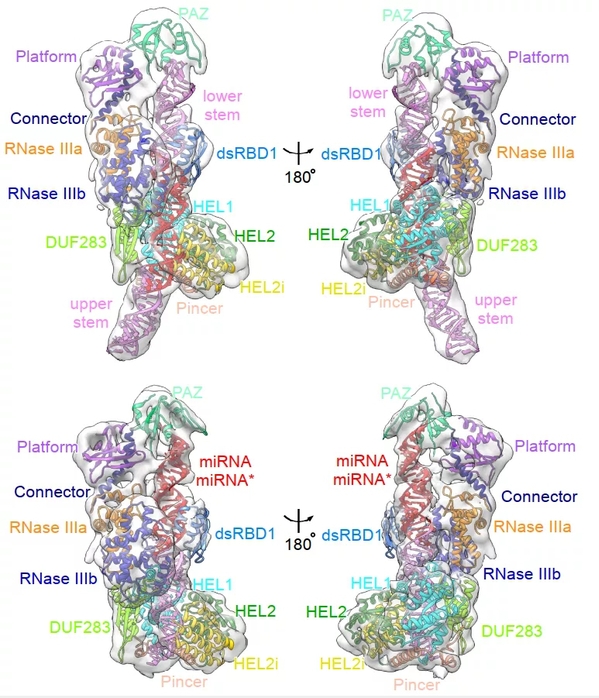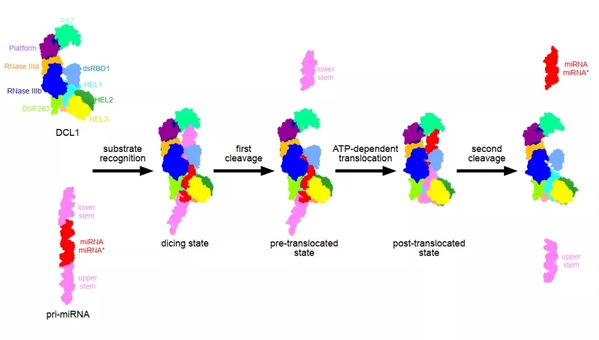MicroRNAs (miRNAs) are short non-coding RNAs that function in RNA silencing and post-transcriptional regulation of gene expression. In animals, pri-miRNAs are cleaved by Drosha to generate pre-miRNAs, which are subsequently cleaved by Dicer to generate mature miRNAs. Instead of being cleaved by two different enzymes, both cleavages in plants are performed by Dicer-like 1 (DCL1). With a similar domain architecture as human Dicer, it is mysterious how DCL1 recognizes pri-miRNAs and executes two cleavages sequentially.
In recent years, the research team led by Prof. FENG Yu from the Sir Run Run Shaw Hospital, Zhejiang University School of Medicine has conducted a systematic research into microRNA processing in plants at a molecular level. The findings were published in the journal Nature Plants on September 30.
Researchers employed single-particle cryo-electron microscopy (cryo-EM) to determine the structures of Arabidopsis DCL1 complexed with a pri-miRNA and a pre-miRNA at a nominal resolution of 4.6 and 4.9 Å, respectively. These structures capture DCL1 in dicing states and reveal that both pri-miRNA and pre-miRNA threads through the helicase module as double-stranded RNA.

Cryo-EM structures of DCL1 in complex with pri-miRNA and pre-miRNA
Based on this work and previous genetic and biochemical studies, researchers proposed a model for miRNA processing in plants. First, the PAZ domain recognizes and binds the internal loop of pri-miRNA. In the meantime, the helicase module clamps the duplex of pri-miRNA. In this configuration, the cleavage sites are aligned with the RNase III active centers with the assistance of dsRBD1. After the first cleavage, pre-miRNA translocates towards the PAZ domain in an ATP-dependent manner. As soon as the 3′ overhang reaches the PAZ domain, it is captured by the 3′ overhang binding pocket, which aligns the cleavage sites with the RNase III active centers again.

Proposed model of miRNA processing in plants
"These structures uncover the plasticity of the PAZ domain, which is critical for the recognition of both pri-miRNA and pre-miRNA, and suggest that the helicase module serves as an engine that transfers the substrate between two sequential cleavage events." said Prof. Feng, "Our research explains the sequential cleavage activity of DCL1 and sheds light on the dicing state of human Dicer, as well."






